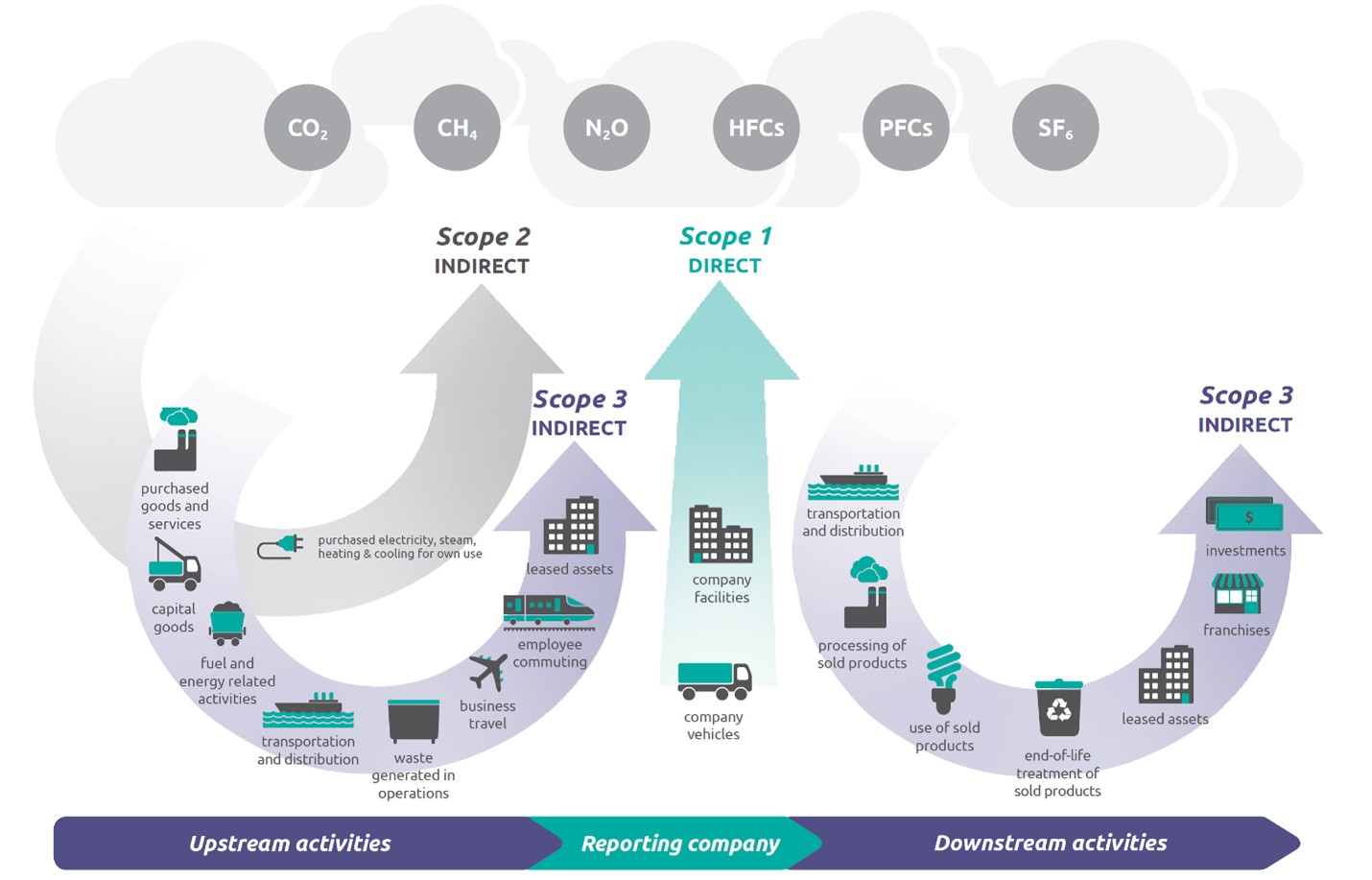What are Scope 3 Emissions?
Circular Economy
Due to a variety of legislation that has been passed (California) and proposed (New York, New Jersey, and Illinois), companies with over a billion in revenue that conduct some business within these states will need to report their Green House Gas Emissions as soon as 2026 for California and potentially 2028 for the other states. More companies are looking to collect not only their Scope 1 and 2 emissions, but Scope 3 data from their vendor partners to comply with reporting requirements. Discussions about Scope 3 are taking place, but it is a nebulous category when compared to Scope 1 and Scope 2.
To fully grasp Scope 3, let us break down the broader emission categories:
- Scope 1 Emissions: These are direct emissions from sources owned or controlled by your company. Scope 1 involves combustion. For example, emissions from company-owned vehicles or on-site manufacturing facilities. Other examples include gas cook tops in restaurants or natural gas used for heating spaces or creating hot water.
- Scope 2 Emissions: These are indirect emissions from the generation of purchased electricity, steam, heating, and cooling consumed by your company. Scope 2 involves energy that is created offsite and then transported to your facility.
Then comes Scope 3, the behemoth. It encompasses a vast array of activities, often representing the largest portion of a company's carbon footprint. The Greenhouse Gas Protocol, a widely used standard, categorizes Scope 3 emissions into 15 distinct categories. Scope 3 is all the indirect emissions related to your business. They include emissions from mining and extracting raw materials, manufacturing goods, transportation (goods and people), through the emissions related to the disposal of your product. Since the categories vary so much, and since there are so many of them, it is difficult to accurately quantify this category. Do you rely on a store to sell your product: their Scope 1 and 2 becomes your Scope 3. The trash truck that drives your end-of-life product to the landfill. Also, Scope 3
Why are Scope 3 emissions so important?
- Comprehensive Footprint: They provide a more complete picture of a company's environmental impact, revealing hidden emissions within the supply chain.
- Risk Management: Unaccounted-for Scope 3 emissions can expose companies to regulatory, reputational, and financial risks.
- Future Regulations: Many regions are beginning to make reporting of scope 3 emissions mandatory.
Challenges in Measuring Scope 3:
- Data availability and accuracy can be challenging, as it requires collaboration with numerous suppliers and customers.
- The complexity of value chains can make it difficult to track and allocate emissions.
- Defining boundaries and methodologies can be complex and require careful consideration.
Moving Forward:
While measuring Scope 3 emissions can be daunting, it is a critical step towards achieving sustainability goals. Companies can begin by:
- Prioritizing the most significant Scope 3 categories.
- Engaging with suppliers and customers to gather data.
- Utilizing standardized methodologies and tools.
- Setting targets and developing strategies for reducing emissions.
Image Source: Scope 3 Standard, page 5.

How Genesis Dome Can Help:
We are your boutique partner, creating end-of-life solutions for your products. We can support you in all your sustainability needs from consultative services, to reporting to setting and achieving your goals. By reducing material and goods from going to the landfill we can improve Scope 3 performance by converting your product life cycle from linear to circular, which can not only improve your end-of-life emissions but reduce your production emissions by utilizing materials that have already been produced. Having a partner who can assist you with reducing your Scope 3 emissions, not only is good for the environment but reduces your future business risks by reducing your dependency on raw materials (which are finite). A good partner, like Genesis Dome, can also provide consistent tracking and metrics to assist you in reporting the nebulous metrics of Scope 3.
Do you want more information as to how Genesis Dome can assist you? Contact us.
We are your boutique partner, creating end-of-life solutions for your products. We can support you in all your sustainability needs from consultative services, to reporting to setting and achieving your goals. By reducing material and goods from going to the landfill we can improve Scope 3 performance by converting your product life cycle from linear to circular, which can not only improve your end-of-life emissions but reduce your production emissions by utilizing materials that have already been produced. Having a partner who can assist you with reducing your Scope 3 emissions, not only is good for the environment but reduces your future business risks by reducing your dependency on raw materials (which are finite). A good partner, like Genesis Dome, can also provide consistent tracking and metrics to assist you in reporting the nebulous metrics of Scope 3.
Do you want more information as to how Genesis Dome can assist you? Contact us.
Contact Our Team
From secure electronics disposal to tailored industry solutions, we’re here to help.
Connect with our team today for reliable, eco-friendly waste management services.
